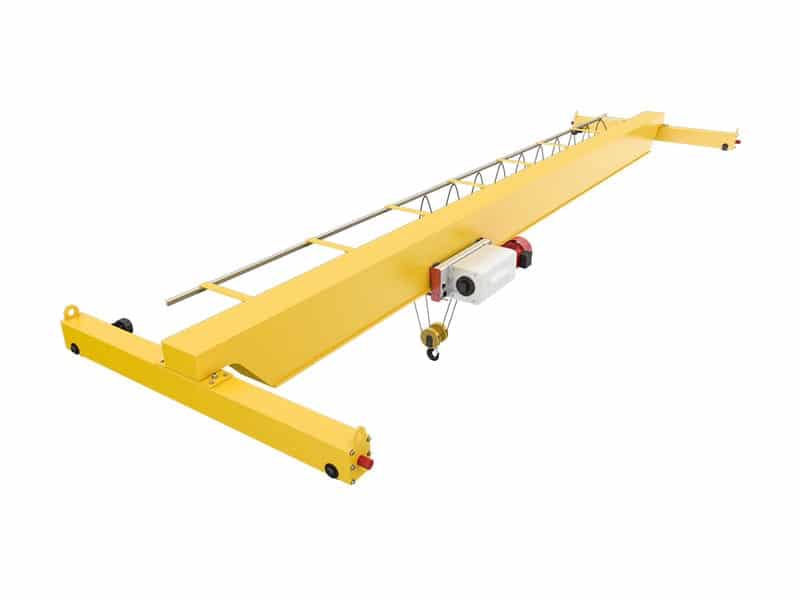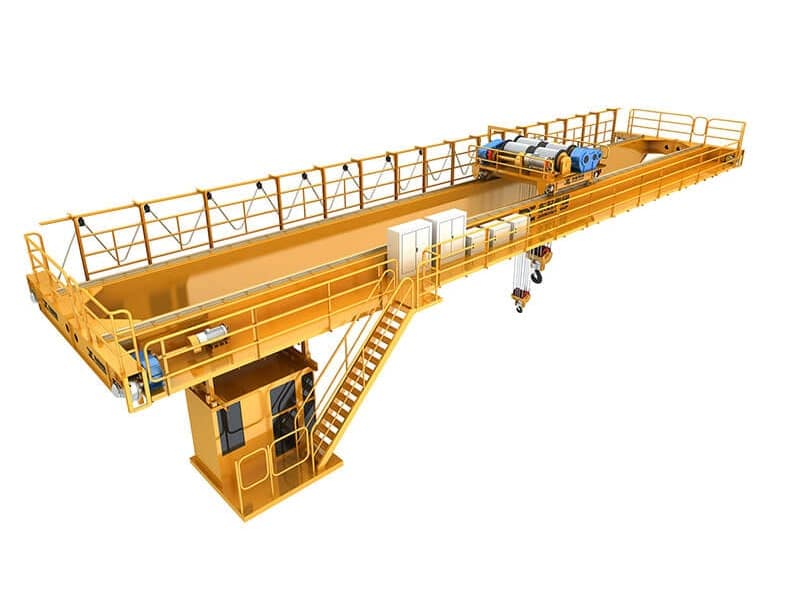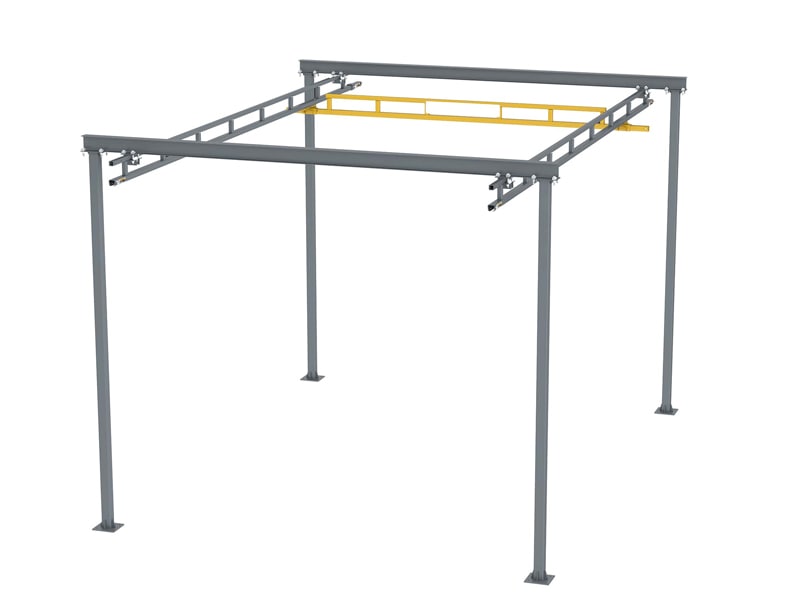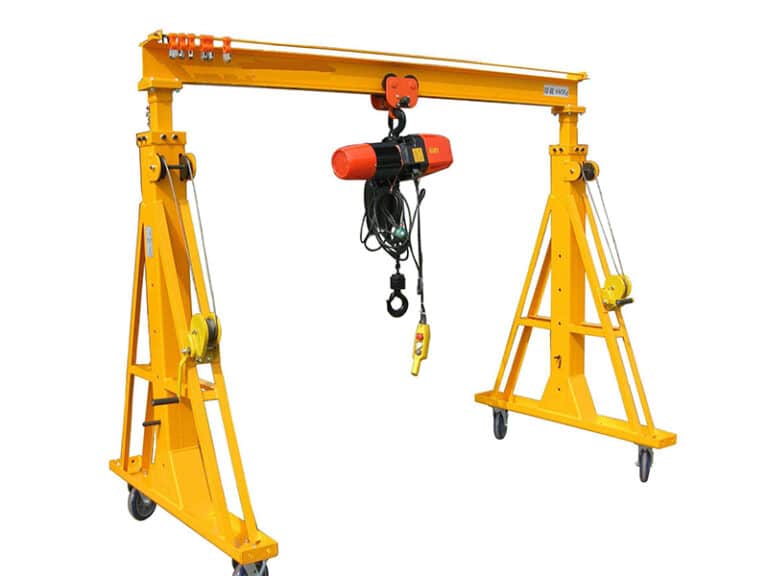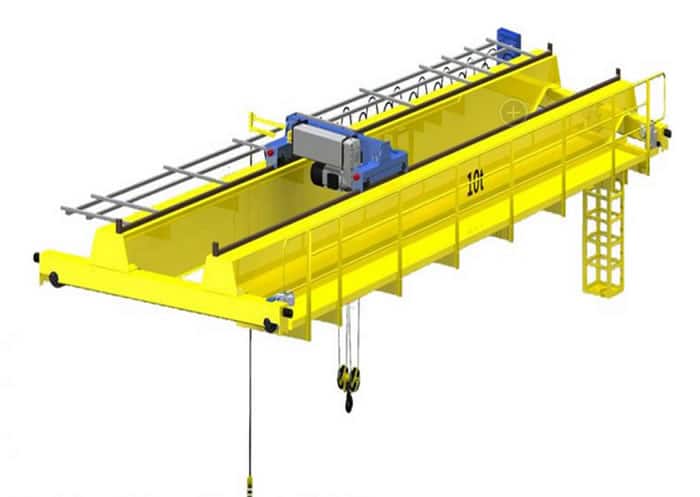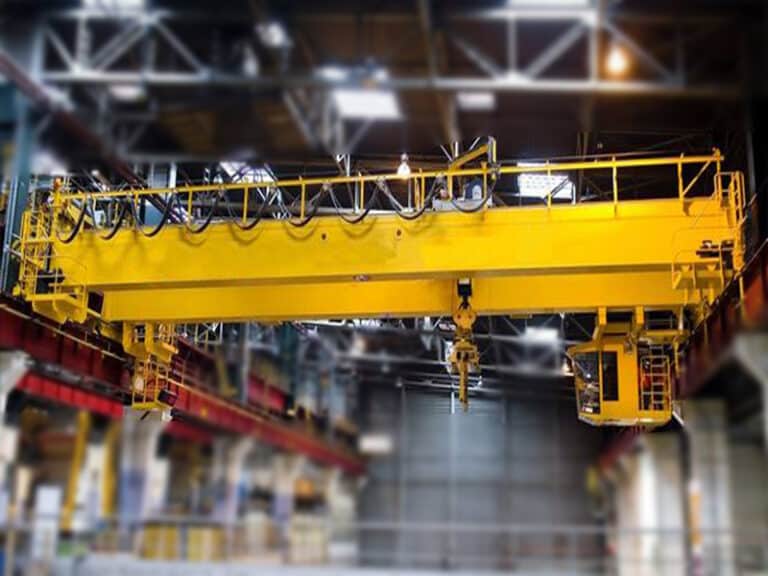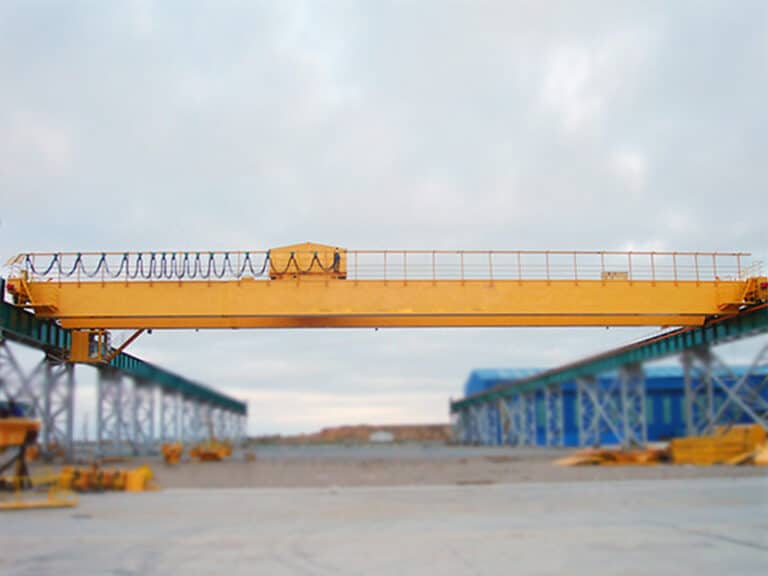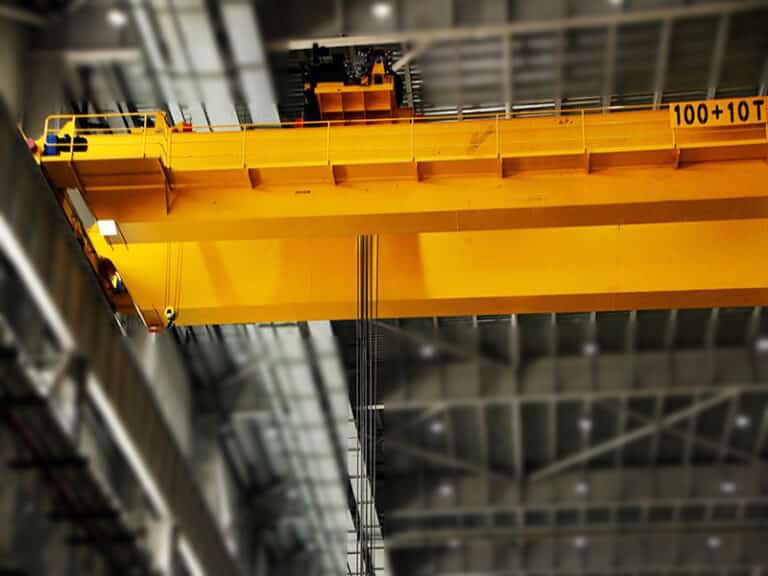Welcome to my blog post on the cost of overhead cranes! If you’re involved in industrial or logistics operations, you’ll know how crucial overhead cranes can be for boosting productivity.
However, buying and maintaining overhead cranes can come with a range of costs and expenses that need to be considered.
In this post, we’ll explore the different costs associated with overhead cranes and discuss ways to reduce them.
So, whether you’re looking to purchase a new overhead crane or optimize the use of an existing one, this post will provide valuable insights to help you save costs and maximize efficiency.
Introduction
The importance of overhead cranes in industrial and logistics operations
Overhead cranes play a crucial role in industrial and logistics operations. They help move heavy materials, reduce the risk of workplace injuries, and increase efficiency in production and logistics processes.
Without overhead cranes, many operations would be much more difficult, time-consuming, and costly. From manufacturing and construction to warehousing and shipping, overhead cranes are essential equipment for many businesses.
By lifting heavy loads and transporting them to their desired location, overhead cranes make it possible for businesses to operate more efficiently and safely.
Why it’s important to consider costs and expenses associated with overhead cranes
It’s important to consider the costs and expenses associated with overhead cranes because they can have a significant impact on a business’s bottom line.
Purchasing, installing, and maintaining overhead cranes can be expensive, and these costs can add up over time.
By understanding the different costs involved with overhead cranes, businesses can make informed decisions about whether to invest in new equipment or optimize their existing equipment.
Additionally, by reducing costs associated with overhead cranes, businesses can increase profitability, improve safety, and gain a competitive advantage in the market.
Overall, considering the costs and expenses associated with overhead cranes is essential for businesses to make the most of their investments.
Cost of Overhead Cranes
Purchase cost of overhead cranes
The purchase cost of overhead cranes refers to the initial cost of buying the equipment.
The price of an overhead crane can vary depending on several factors, such as its capacity, span, height, and features.
The capacity, span, height, and features of overhead cranes can have a significant impact on their cost.
Capacity: The capacity of an overhead crane refers to the maximum weight it can lift. Generally, cranes with higher capacities will cost more than those with lower capacities due to their larger size and more robust construction.
Span: The span of an overhead crane refers to the distance between the two runway rails that the crane travels on. A larger span requires longer runway rails and more significant structural support, which can increase the cost of the crane.
Height: The height of an overhead crane refers to the distance between the floor and the bottom of the hoist. Cranes with higher lifting heights will require more structural support and longer hoist cables, which can increase the cost.
Features: Overhead cranes can come with a range of features, such as variable speed controls, remote control operation, and anti-sway technology. Additional features can increase the cost of the crane, but they can also provide significant benefits, such as increased safety, efficiency, and productivity.
Overall, when purchasing an overhead crane, businesses should consider their specific requirements carefully. Choosing the right capacity, span, height, and features that meet their needs can help minimize the cost while ensuring the crane can perform its necessary functions effectively.
Generally, larger and more complex overhead cranes will cost more than smaller and simpler ones.
Additionally, the material used for construction and the country of origin can also impact the purchase cost.
While purchasing a new overhead crane can be expensive, it can be a worthwhile investment for businesses that require heavy lifting and transportation of materials.
Moreover, considering the long-term benefits and cost savings, a high-quality overhead crane can provide excellent value for money in the long run.
Installation and commissioning costs
The installation and commissioning costs of an overhead crane refer to the expenses involved in setting up the crane and making it operational.
The installation process typically involves preparing the site, installing the crane’s runway rails and structural support, and assembling the crane’s components.
Commissioning involves testing the crane’s functionality and ensuring that it operates safely and effectively.
These costs can vary depending on several factors, such as the complexity of the installation process, the location of the site, and the amount of electrical and mechanical work required.
Moreover, the installation and commissioning process often requires the services of experienced technicians or engineers, which can add to the overall cost.
However, it’s crucial to ensure that the crane is installed and commissioned correctly to prevent accidents, ensure worker safety, and avoid costly repairs in the future.
Therefore, businesses should allocate sufficient funds to cover these expenses and work with reliable and experienced service providers to ensure the crane is set up correctly.
Transport costs
The transport costs of an overhead crane refer to the expenses involved in shipping the equipment from the manufacturer to the installation site.
These costs can vary depending on the distance between the two locations, the size and weight of the crane, and the mode of transportation used.
For example, shipping an overhead crane overseas or across long distances can be expensive due to the logistics involved, including customs clearance, permits, and documentation.
Additionally, if the crane is oversized or overweight, it may require special transportation arrangements, such as oversized or heavy haul trucks, which can increase the cost.
Moreover, the transport cost may also include insurance coverage to protect against damages that may occur during transportation.
Overall, businesses should consider these transport costs when budgeting for an overhead crane to ensure they have sufficient funds to cover all expenses associated with the purchase, delivery, and installation of the equipment.
Maintenance Cost of Overhead Cranes
Costs associated with routine maintenance and upkeep
The costs associated with routine maintenance and upkeep of an overhead crane are ongoing expenses that businesses must consider.
These costs include regular inspections, lubrication of moving parts, replacement of worn-out components, and repairs that may be required to keep the crane operating safely and efficiently.
The frequency of maintenance and upkeep required can vary depending on the frequency of use and the operating conditions of the crane.
For instance, cranes operating in harsh environments, such as those exposed to extreme temperatures, dust, or chemicals, may require more frequent maintenance.
Additionally, businesses must factor in the cost of replacement parts and labor when budgeting for routine maintenance and repairs.
Neglecting to maintain an overhead crane can lead to decreased productivity, costly repairs, and, more importantly, a safety hazard for workers.
Therefore, regular maintenance and upkeep of the crane are essential to ensure its longevity and avoid unexpected expenses.
By allocating sufficient funds to cover routine maintenance and repairs, businesses can extend the crane’s lifespan, minimize downtime, and keep their operations running smoothly.
Costs of repair and replacement of parts
The costs of repair and replacement of parts for an overhead crane are expenses that businesses must be prepared for.
Even with proper maintenance, parts can wear out or break down, requiring repair or replacement.
The cost of repairs and replacements can vary depending on the type of component that needs fixing or replacing and the extent of the damage.
For example, replacing a motor or gearbox can be expensive due to their complexity, while replacing worn-out cables may be less costly.
Moreover, if the crane’s parts are outdated or no longer available, it may be necessary to replace the entire crane, which can be a substantial expense.
Therefore, businesses must have a contingency plan in place to cover these expenses, such as setting aside funds for unexpected repairs and replacements or investing in a warranty or maintenance program.
By being prepared for these costs, businesses can avoid the risk of unexpected downtime and keep their operations running smoothly.
Costs associated with scheduled inspections and maintenance
The costs associated with scheduled inspections and maintenance of an overhead crane refer to the expenses involved in ensuring the crane remains safe, reliable, and efficient over time.
These costs include periodic inspections, lubrication of moving parts, and replacement of worn-out components.
Regular scheduled inspections are necessary to identify any potential issues and to take corrective measures before they become more significant problems.
The cost of inspections can vary depending on the frequency and complexity of the inspections required.
Maintenance costs associated with scheduled inspections can also vary depending on the frequency of maintenance and the condition of the crane.
The costs can include replacement parts, labor costs, and fees for any external maintenance contractors that may be required.
Moreover, businesses must factor in the potential costs associated with any repairs or replacements needed as a result of inspections and maintenance. Addressing issues early on can prevent more expensive and time-consuming repairs in the future.
By investing in scheduled inspections and maintenance, businesses can minimize the risk of unexpected downtime, extend the lifespan of the crane, and ensure worker safety.
Therefore, it’s crucial to factor in these costs when budgeting for an overhead crane to ensure the long-term efficiency and safety of the equipment.
Operational Cost of Overhead Cranes
The operational cost of an overhead crane refers to the ongoing expenses associated with using the equipment, such as electricity and operator wages.
These costs can vary depending on factors such as the frequency and duration of use, the crane’s capacity, and the efficiency of the equipment.
Power consumption costs
The power consumption costs associated with using an overhead crane refer to the amount of electricity required to operate the equipment.
The amount of power consumed can vary depending on factors such as the crane’s capacity, the duration and frequency of use, and the efficiency of the equipment.
Businesses should consider the power consumption costs when budgeting for an overhead crane and explore ways to reduce electricity usage, such as investing in energy-efficient models or implementing power-saving measures.
This can help minimize operational costs and improve the overall cost-effectiveness of the investment.
Operator training and salary costs
The operator training and salary costs associated with using an overhead crane refer to the expenses involved in hiring and training a qualified operator to operate the equipment.
The cost of operator training can vary depending on factors such as the complexity of the crane, the operator’s prior experience, and the duration of the training program.
In addition to training costs, businesses must factor in the ongoing salary expenses associated with employing a crane operator.
The operator’s salary can vary depending on factors such as the operator’s level of experience and the frequency and duration of crane operation.
Investing in proper operator training and competitive salary packages can help ensure that the crane operates efficiently and safely, minimizing the risk of accidents and equipment damage.
Therefore, it’s essential to factor in these costs when budgeting for an overhead crane.
How to Reduce the Cost of Overhead Cranes
Optimizing the use and maintenance schedule of overhead cranes
Optimizing the use and maintenance schedule of overhead cranes can help businesses minimize the cost of owning and operating the equipment.
By implementing a preventive maintenance schedule, businesses can identify and address potential issues before they become more significant problems. This can help minimize the risk of unexpected downtime and expensive repairs.
Moreover, businesses can optimize the use of the crane by scheduling its use during times of low energy demand, implementing power-saving measures, and ensuring that the operator is trained to operate the equipment efficiently.
By optimizing the use and maintenance schedule of the overhead crane, businesses can ensure that the equipment operates efficiently, safely, and cost-effectively over its lifespan.
This can help maximize the return on investment and contribute to the overall success of the business.
Conclusion
Summarizing the major components of overhead crane costs
The cost of an overhead crane comprises several components, including purchase costs, installation and commissioning costs, transportation costs, routine maintenance and upkeep costs, repair and replacement costs, scheduled inspection and maintenance costs, power consumption costs, operator training and salary costs, and optimization costs.
It’s essential to consider all of these factors when budgeting for an overhead crane to ensure that the investment is cost-effective and meets the business’s needs.
Optimizing the use and maintenance schedule of the equipment can also help minimize overhead crane costs and improve the return on investment.
Overhead Cranes
Higher speeds enhance industrial applications without adding any additional ground obstacles, making it a low-cost solution for factory and workstation material handling.
Single Girder Overhead Cranes
√ Standard span: 6 to 30 m
Light-duty material handling systems is mainly used in light-duty workshops and warehouses such as in the textile industry and the food industry.
Double Girder Overhead Cranes
√ Standard span: 6 to 30 m
Mainly used in factories, warehouses, and other indoor steel structure workshops.
Freestanding Bridge Cranes
√Standard Span: 1 to 9 m
Used in workstations, factories, and other work workshops.


